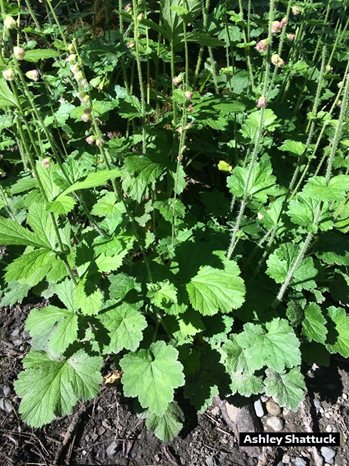Fringecup
Tellima grandiflora – Fringecup
At a Glance:

- Family: Saxifragaceae
- Plant Type: Mostly basal (sometimes spreading) herb with tall flowering stalks
- Distribution: Mostly Pacific Coast, California to Alaska, as far east as Montana
- Habitat: moist woods and edges of wetlands
- Height:
- Flower: flowers range from a pale green/yellow color to pale and hot pinks. They are bell shaped and bend backward with long whispy/lacey petals that look like fine hairs or fringe (how it got its common named). There is a lot of variety in the flowers, so always stop and look!
- Flowering Season: April – July
- Leaves: slightly lobed, round, dark green leaves with hairs and long stalks (petioles)
- Generation: Perennial
- Fun fact: Genus name Tellima comes from an anagram of Mitella, another genus that is very closely related.
Restoration and Conservation
Fringecup can create thick patches of ground cover, establishing well in disturbed and shady areas (especially along trails), outcompeting invasive weeds. They are easy to divide and propagate, and are fairly easy to grow from seed with a high transplant rate. Once established, they are also slug resistant and evergreen during mild winters.
Ethnobotany
The Skagit tribe use the whole plant to treat many ailments, including appetite loss. It was pounded, boiled, or drank as tea.
References and Resources
- King County: https://green2.kingcounty.gov/gonative/Plant.aspx?Act=view&PlantID=78
- MBG: https://www.missouribotanicalgarden.org/PlantFinder/PlantFinderDetails.aspx?taxonid=286921&isprofile=0&
- RSG: https://www.rainyside.com/plant_gallery/natives/Tellima_grandiflora.html
- UW: https://courses.washington.edu/esrm412/protocols/TEGR2.pdf
- WTU Image Herbarium: http://biology.burke.washington.edu/herbarium/imagecollection/taxon.php?Taxon=Tellima%20grandiflora
This article was written by Sarah Verlinde. For questions regarding the UWB/CC Plant Tour, contact Sarah at severlin@uw.edu.